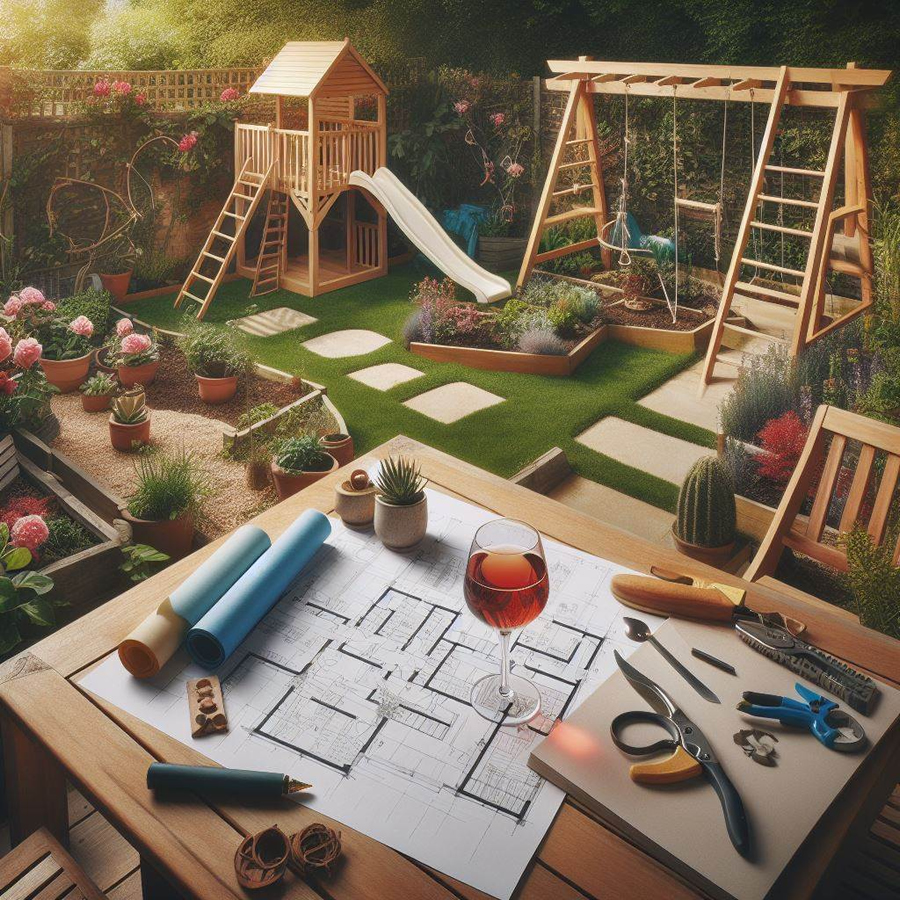Introduction
Wooden climbing frames are an incredible addition to any family garden.

They provide hours of active fun, encourage imaginative play, and help children build physical skills. But before you rush to buy, there's an important step: planning! Careful consideration ensures a happy installation and years of safe, enjoyable play ahead.
Choosing the Right Location
Finding the ideal spot in your garden is key to maximizing enjoyment and safety:
- Visibility: Position the climbing frame where you can keep a watchful eye on your children while they play, ideally from a window within your house.
- Level Ground: Seek a flat, level area for optimal stability, minimizing the need for ground preparation before installation.
- Sun and Shade: A balance of sun and shade is ideal. Think about how the sun moves across your garden throughout the day. You may want some natural shade during hot afternoons.
- Space: Remember the frame itself is only part of the picture. Factor in ample space around it for children to run, swing, and slide safely.
Safety First: Creating A Safe Play Zone
Safety is paramount when it comes to children and play equipment.
- Fall Zone: Refer to the climbing frame's instructions for the recommended safe fall zone around the equipment. This zone should be clear of obstacles like walls, fences, or other play equipment.
- Surfacing: Soft, impact-absorbing surfacing is essential under and around the climbing frame. Wood chips, rubber mulch, or specialist play mats are popular choices.
- Supervision: Even with the safest setup, adult supervision is vital, especially with younger children.
Integrating Your Climbing Frame with Your Garden Design
Your climbing frame should be a harmonious addition to your outdoor space:
- Natural Style: Wooden climbing frames blend beautifully with natural garden designs. Plant climbers or shrubs around the base to soften its appearance.
- Play Area: Create a dedicated play area incorporating the climbing frame, sandpit, swings, or other equipment. This keeps active play contained and adds structure to your garden.
- Accessibility: Ensure there are clear pathways to and from the climbing frame, making it easy for children to reach their play zone.
Size Matters: Picking the Right Climbing Frame
With a vast range of wooden climbing frames available, selecting the right size is crucial. Consider:
- Children's Ages: Younger children may be better suited to smaller frames with simpler features, while older children can enjoy greater challenges.
- Garden Space: Don't be tempted to cram a huge frame into a small garden. Measure carefully and choose a size that leaves ample room around it.
- Expandability: Look for modular designs that allow you to add sections, swings, or slides as your children grow and their interests evolve.
Additional Factors for Your Plan
Here are some more aspects to include in your planning process:
- Installation: Will you DIY or hire professionals? Factor this into your timeline and budget.
- Maintenance: Wooden climbing frames require regular inspections and may need treating or staining periodically to ensure longevity.
- Weather: In areas of heavy rain, consider adding a cover to protect your climbing frame during periods of non-use.
Let the Adventures Begin!
With careful planning, your wooden climbing frame will transform your garden into a haven of fun, laughter, and happy memories for the whole family.
Ready to get planning? Browse our guides and resources for even more tips and inspiration.
Author - Ben B
Posted - 23 Feb 2024
Disclaimer: This information is subject to change and as such, is provided for informational purposes only and does not constitute professional advice. Readers are encouraged to verify the details independently.
